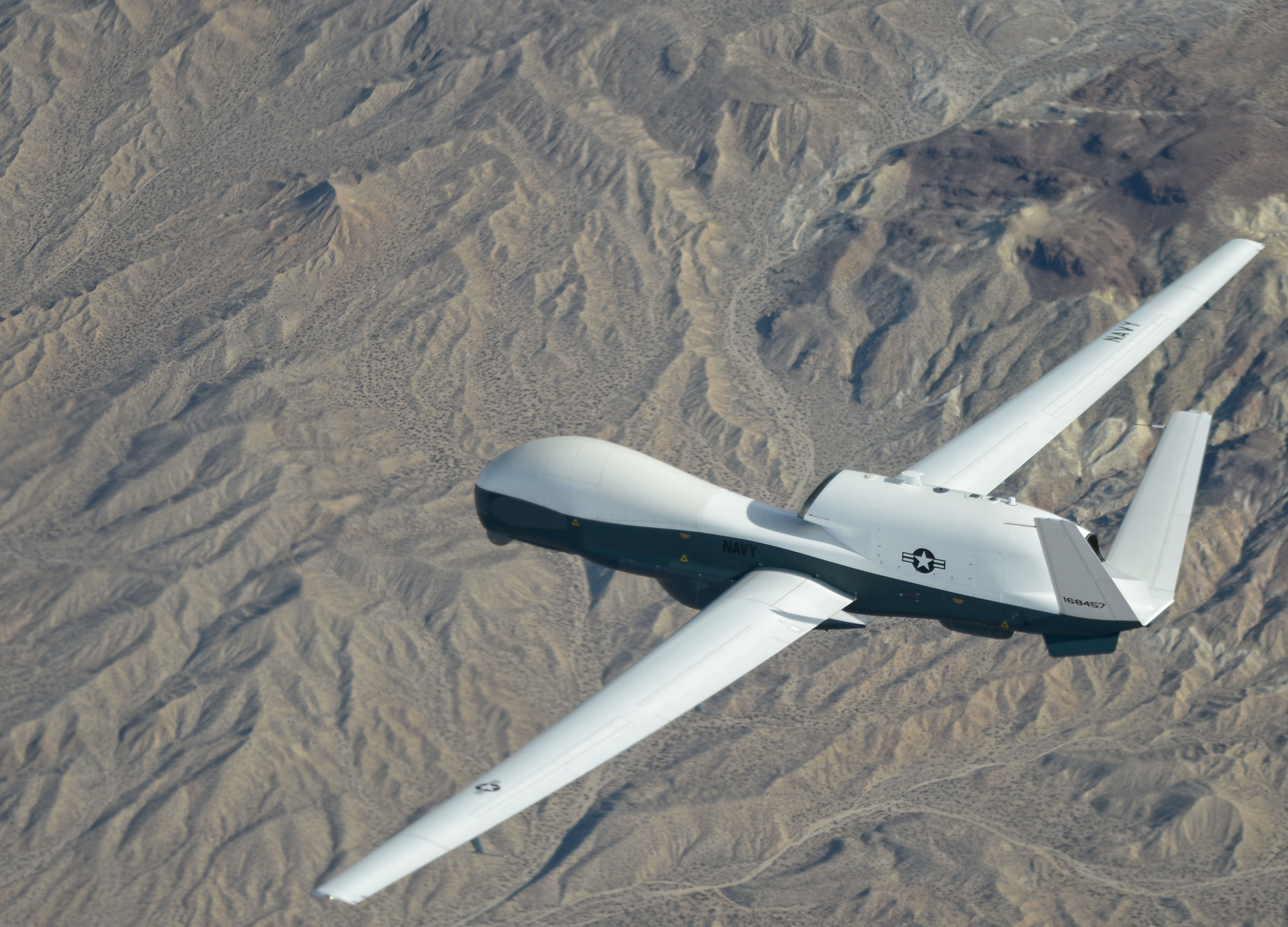
The U.S. Navy and Northrop Grumman are looking at alternative technologies to provide the MQ-4C Triton unmanned maritime patrol aircraft with an airborne “sense and avoid” capability, Navy officials said on Tuesday at the Navy League’s Sea Air Space 2014 exposition at National Harbor, Md.
The aircraft’s original radar-based sense-and-avoid system—which would have been used to avert potential mid-air collisions—ran into potentially insurmountable developmental problems last year.
“We’re stepping back, and we’re taking a hard look at what we could use to provide that sense-and-avoid capability for us and we’re going to go out and look across the spectrum,” said Sean Burke, Naval Air Systems Command’s (NAVAIR) deputy program manager for the Triton.
While the Navy could decide to continue to work to fix the existing radar, it is also looking at other options. The problem for the Navy is that there are no other comparable radars available to fill the gap.
Burke said he could not yet say what the most promising potential alternative technologies to fill that gap might be. However, options might include electro-optical/infrared cameras, laser radar or other technologies. “We haven’t yet looked across the entire spectrum of those.”
However, airborne radar might still be the overall best solution. “That’s why we went with the radar as the sensor of choice initially,” he said.
The MQ-4C was expected to be the first operational unmanned aircraft to incorporate the ability to spot other airborne traffic before its Exelis-developed radar ran into developmental challenges.
Mike Mackey, Northrop’s Triton program manager, said that the fundamental problem was that it proved to be far more difficult than anticipated to package an active electronically scanned array radar into such small space. It was simply too difficult to meet the weight, cooling and power requirements. “Miniaturizing that—if you will—that kind of a radar suite turned out to be more challenging than we initially thought,” Burke said.
While Exelis is still on contract to build the sense-and-avoid radar as a subcontractor, Mackey said that Northrop has placed a stop work order on the system. Burke said that the program has not made a decision on whether to continue to develop the Exelis-made radar or go in a different direction.
Burke said that “due regard” is a critical capability for the Triton, but sense and avoid is but one component of that. At higher altitudes above 18,000ft separation data can provide by Automatic Dependent Surveillance-Broadcast (ADS-B) and the Traffic Collision Avoidance System (TCAS). Below 18,000ft, there are ground and ship-based radars that can provide traffic separation.
But in order to operate at low altitudes independently, the Triton must have a “sense and avoid” system, Burke said.
If testing progresses as planned, the MQ-4C will become operational in 2017.





